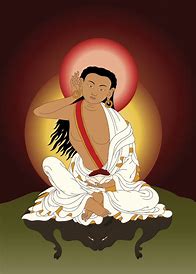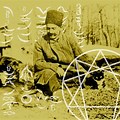Solomon's Law
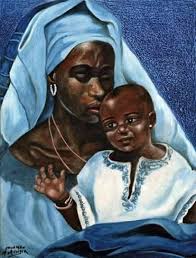









Solomon's Law
Legal history or the history of law is the study of how law has evolved and why it has changed. Legal history is closely connected to the development of civilisations and operates in the wider context of social history. Certain jurists and historians of legal process have seen legal history as the recording of the evolution of laws and the technical explanation of how these laws have evolved with the view of better understanding the origins of various legal concepts; some consider legal history a branch of intellectual history. Twentieth-century historians viewed legal history in a more contextualised manner – more in line with the thinking of social historians.
They have looked at legal institutions as complex systems of rules, players and symbols and have seen these elements interact with society to change, adapt, resist or promote certain aspects of civil society.
Such legal historians have tended to analyse case histories from the parameters of social-science inquiry, using statistical methods, analysing class distinctions among litigants, petitioners and other players in various legal processes.
By analyzing case outcomes, transaction costs, and numbers of settled cases, they have begun an analysis of legal institutions, practices, procedures and briefs that gives a more complex picture of law and society than the study of jurisprudence, case law and civil codes can achieve.
Ancient world
Ancient Egyptian law, dating as far back as 3000 BC, was based on the concept of Ma'at, and was characterised by tradition, rhetorical speech, social equality and impartiality. By the 22nd century BC, Ur-Nammu, an ancient Sumerian ruler, formulated the first extant law code, consisting of casuistic statements ("if... then..."). Around 1760 BC, King
Hammurabi further developed Babylonian law, by codifying and inscribing it in stone. Hammurabi placed several copies of his law code throughout the kingdom of Babylon as stelae, for the entire public to see; this became known as the Codex Hammurabi.
The most intact copy of these stelae was discovered in the 19th century by British Assyriologists, and has since been fully transliterated and translated into various languages, including English, German and French. Ancient Greek has no single word for "law" as an abstract concept, retaining instead the distinction between divine law (thémis), human decree (nomos) and custom (díkē). Yet Ancient Greek law contained major constitutional innovations in the development of democracy.
United States
The United States legal system developed primarily out of the English common law system (with the exception of the state of Louisiana, which continued to follow the French civilian system after being admitted to statehood). Some concepts from Spanish law, such as the prior appropriation doctrine and community property, still persist in some US states, particularly those that were part of the Mexican Cession in 1848.
Under the doctrine of federalism, each state has its own separate court system, and the ability to legislate within areas not reserved to the federal government.
Modern European law
The two main traditions of modern European law are the codified legal systems of most of continental Europe, and the English tradition based on case law.
As nationalism grew in the 18th and 19th centuries, lex mercatoria was incorporated into countries' local law under new civil codes. Of these, the French Napoleonic Code and the German Bürgerliches Gesetzbuch became the most influential.
As opposed to English common law, which consists of massive tomes of case law, codes in small books are easy to export and for judges to apply. However, today there are signs that civil and common law are converging. European Union law is codified in treaties, but develops through the precedent set down by the European Court of Justice.
- Reference: Wikipedia - U Tube
Chief prosecutor defends Vatican's legal system after recent criticism of pope's absolute power
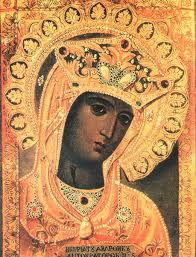









Chief prosecutor defends Vatican's legal system after recent criticism of pope's absolute power
ROME (AP) — The Vatican’s chief prosecutor has strongly defended the integrity and fairness of the city state’s justice system following criticism that Pope Francis' absolute power and his interventions in the so-called “trial of the century” last year violated the defendants’ fundamental rights.
Prosecutor Alessandro Diddi's defense comes as the Vatican tribunal finalizes its written reasonings for its December 2023 verdicts. The tribunal convicted a cardinal and eight others of various financial-related crimes related to the Holy See’s 350 million euro investment in a London property, but has not yet explained its decisions.
Diddi published an essay last month in a peer-reviewed Italian journal, “Law and Religion,” though he was not identified as the Vatican’s top criminal prosecutor in the online article. Legal experts said such a publication in an academic journal was unusual, since Diddi is a party to the trial.
He was essentially replying to two academics — and lawyers representing some of the 10 defendants — who have raised questions about whether the two-year trial and preceding investigation were fair.
Their critiques have raised questions about whether a fair trial is even possible in an absolute monarchy where the pope wields supreme legislative, executive and judicial power — and used it in this case.
Francis recently named several friendly cardinals — none with experience in Vatican law — to sit as judges on the Vatican's highest court of appeal and issued new rules on judges' salary and pension benefits.
In his essay, Diddi argued the trial and Vatican system itself were most certainly fair. He insisted that the tribunal and its judges were fully independent and that the defense had every opportunity to present its case. He said the pope’s four decrees merely filled regulatory loopholes in the Vatican's peculiar legal code and had no impact on the outcome of the trial or the rights of the defendants.
Diddi denied the decrees impacted the suspects’ rights. He said they merely provided an “authentic interpretation” by the pope to Vatican norms.
He argued that regardless, the decrees only “disciplined some particular aspects of the investigation,” and “and did not determine any failure in the guarantees offered to the suspects.”
Geraldina Boni, a canon lawyer who provided a legal opinion for the defense of Cardinal Angelo Becciu, has written that the decrees represented a clear violation of the right to a fair trial since the suspects didn't know about the broad powers granted to prosecutors. One defendant who came in for questioning was jailed for 10 days by prosecutors.
Diddi noted that Swiss and Italian courts have previously recognized the independence and impartiality of the Vatican City State's legal system in agreeing to provide judicial assistance in freezing assets of the suspects.
Those rulings, however, were issued before the current trial ended and the decrees' existence known. Additionally, a British judge ordered the assets of one of the suspects released because he found “appalling” misrepresentations and omissions in Diddi's case.
Questions about the fairness and impartiality of the Vatican City State’s legal system could have implications for the Holy See down the road, since the Vatican relies on other countries to cooperate in law enforcement investigations and implement its sentences.
Additionally, whenever the Holy See signs commercial contracts with non-Vatican entities, it insists that any contract dispute be handled by its own tribunal. That contractual clause could become difficult to negotiate if there are questions about whether the other side will be treated fairly by the Vatican court.
Less hypothetically, the Holy See is subject to periodic review by the Council of Europe’s Moneyval commission, whose evaluators analyze the effectiveness of the judicial system in fighting money laundering and terrorist financing.
In a related development, the Vatican’s No. 3 official on Monday wrapped up three days of testimony in a London court in a spinoff counter-suit brought by one of the Vatican defendants.
Raffaele Mincione, a London-based financier, is seeking to have the British High Court declare that he acted “in good faith” in his dealings with the Vatican over the London property. He is hoping to clear his name and repair the reputational harm he says he and his firm have endured as a result of the Vatican trial.
Mincione has also filed a complaint with the U.N. human rights office in Geneva, claiming that the pope violated his rights by authorizing surveillance via the decrees. The Vatican has rejected the claim, saying in a press statement that the investigation followed all relevant laws and international agreements and that no surveillance was actually ordered for Mincione.
Mincione, and the other defendants, have announced appeals.
- Story by NICOLE WINFIELD, Associated Press
Sacred Mysteries: The connection between E Nesbit and St Sebastian
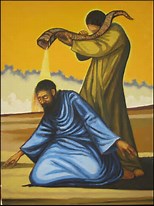








Sacred Mysteries: The connection between E Nesbit and St Sebastian
The author of The Phoenix and the Carpet and The Railway Children, E Nesbit, married an impossible man. Edith fell for Hubert Bland, left home and was married in a register office. He gave a false address and didn’t tell his mother, for he had already had a son by her paid companion, Maggie.
When Edith discovered, she forgave him. She forgave him again when her best friend Alice came to care for her in an illness and became the mother of a daughter by Hubert. She passed off the girl as her own (as again with a son).
His fellow-socialist Bernard Shaw said Bland was “never seen without an irreproachable frock coat, tall hat, and a single eyeglass which infuriated everybody”. Bland said of himself: “All who knew him liked him except those who hated him.”
Edith wrote a couple of novels with Hubert under the pen name Fabian Bland, for in 1884 he had helped found the Fabian Society. It favoured socialism achieved by permeating existing structures, instead of by revolution This became the philosophy of the Labour Party.
Edith called a son born in 1885 Fabian, but he died suddenly in 1900, a loss she felt greatly. Then Hubert Bland died in 1914, having become a Catholic.
Edith then married a Cockney who never wore a collar, to the disapproval of her family. He was a Catholic too, though she never formally converted. They lived in two army huts on Romney Marsh. What a life she had!
I think few now appreciate that the Fabian Society, which is still going as a think-tank, was named after the Roman General, Quintus Fabius Maximus Verrucosus. He was called Verrucosus after the wart on his lip but he was also called Cunctator because of his delaying tactics in fighting Hannibal. The Fabian Society has been keeping its powder dry for 140 years.
Today is the feast of St Fabian, Bishop of Rome, martyred in 250. He was of the same family as the general 500 years before.
People complain about popes now – that they are too loose doctrinally or too hidebound. But things were a shambles in Fabian’s day. He was credited with reconciling rival factions in Rome that had followed either Pope Pontian or Hippolytus, an anti-Pope as far as can be made out. Both were martyred, perhaps together in exile, and martyrdom does a lot to make up for schismatic tendencies. The two share a feast day, August 13.
But during Pope Fabian’s reign a new imperial persecution broke out. Fabian was recorded as dividing Rome into seven deaneries, with notaries to collect information about the martyrs. He became a martyr himself on January 20 250 and was buried in the catacomb of Callixtus. The carved inscription on this tomb survives, cut in Greek characters.
In the early 18th century, his remains were transferred to the church of St Sebastian without the Walls, a basilica rebuilt in the early 17th century above ancient catacombs. The facade is a modest Baroque structure that would hardly be noticed in Venice. It stands in a stone-walled nook like a farmyard on the old Via Appia.
Pope St Fabian’s altar is in the Albani chapel in the basilica. The sculpture nearby of the recumbent St Sebastian (whose feast also falls today) at his own altar owes something to Michelangelo’s Dying Slave and adumbrates the memorial to Shelley at University College, Oxford, with the addition of two or three arrows. St Fabian stands fully vested and triply tiara’d in high Renaissance style, assisted by three marble angels.
- Opinion by Christopher Howse
Mother Teresa of Calcutta (1910-1997)










|
Mother Teresa of Calcutta (1910-1997)
“By blood, I am Albanian. By citizenship, an Indian. By faith, I am a Catholic nun. As to my calling, I belong to the world. As to my heart, I belong entirely to the Heart of Jesus. ”Small of stature, rocklike in faith, Mother Teresa of Calcutta was entrusted with the mission of proclaiming God’s thirsting love for humanity, especially for the poorest of the poor. “God still loves the world and He sends you and me to be His love and His compassion to the poor.” She was a soul filled with the light of Christ, on fire with love for Him and burning with one desire: “to quench His thirst for love and for souls.” This luminous messenger of God’s love was born on 26 August 1910 in Skopje, a city situated at the crossroads of Balkan history. The youngest of the children born to Nikola and Drane Bojaxhiu, she was baptised Gonxha Agnes, received her First Communion at the age of five and a half and was confirmed in November 1916. From the day of her First Holy Communion, a love for souls was within her. Her father’s sudden death when Gonxha was about eight years old left in the family in financial straits. Drane raised her children firmly and lovingly, greatly influencing her daughter’s character and vocation. Gonxha’s religious formation was further assisted by the vibrant Jesuit parish of the Sacred Heart in which she was much involved. |
At the age of eighteen, moved by a desire to become a missionary, Gonxha left her home in September 1928 to join the Institute of the Blessed Virgin Mary, known as the Sisters of Loreto, in Ireland. There she received the name Sister Mary Teresa after St. Thérèse of Lisieux. In December, she departed for India, arriving in Calcutta on 6 January 1929. After making her First Profession of Vows in May 1931, Sister Teresa was assigned to the Loreto Entally community in Calcutta and taught at St. MaryÂ’s School for girls. On 24 May 1937, Sister Teresa made her Final Profession of Vows, becoming, as she said, the “spouse of Jesus” for “all eternity.” From that time on she was called Mother Teresa. She continued teaching at St. MaryÂ’s and in 1944 became the schoolÂ’s principal. A person of profound prayer and deep love for her religious sisters and her students, Mother TeresaÂ’s twenty years in Loreto were filled with profound happiness. Noted for her charity, unselfishness and courage, her capacity for hard work and a natural talent for organization, she lived out her consecration to Jesus, in the midst of her companions, with fidelity and joy.
On 10 September 1946 during the train ride from Calcutta to Darjeeling for her annual retreat, Mother Teresa received her “inspiration,” her “call within a call.” On that day, in a way she would never explain, Jesus’ thirst for love and for souls took hold of her heart and the desire to satiate His thirst became the driving force of her life. Over the course of the next weeks and months, by means of interior locutions and visions, Jesus revealed to her the desire of His heart for “victims of love” who would “radiate His love on souls.” “Come be My light,” He begged her. “I cannot go alone.” He revealed His pain at the neglect of the poor, His sorrow at their ignorance of Him and His longing for their love. He asked Mother Teresa to establish a religious community, Missionaries of Charity, dedicated to the service of the poorest of the poor. Nearly two years of testing and discernment passed before Mother Teresa received permission to begin. On August 17, 1948, she dressed for the first time in a white, blue-bordered sari and passed through the gates of her beloved Loreto convent to enter the world of the poor.
After a short course with the Medical Mission Sisters in Patna, Mother Teresa returned to Calcutta and found temporary lodging with the Little Sisters of the Poor. On 21 December she went for the first time to the slums. She visited families, washed the sores of some children, cared for an old man lying sick on the road and nursed a woman dying of hunger and TB. She started each day in communion with Jesus in the Eucharist and then went out, rosary in her hand, to find and serve Him in “the unwanted, the unloved, the uncared for.” After some months, she was joined, one by one, by her former students.
On 7 October 1950 the new congregation of the Missionaries of Charity was officially established in the Archdiocese of Calcutta. By the early 1960s, Mother Teresa began to send her Sisters to other parts of India. The Decree of Praise granted to the Congregation by Pope Paul VI in February 1965 encouraged her to open a house in Venezuela. It was soon followed by foundations in Rome and Tanzania and, eventually, on every continent. Starting in 1980 and continuing through the 1990s, Mother Teresa opened houses in almost all of the communist countries, including the former Soviet Union, Albania and Cuba.
In order to respond better to both the physical and spiritual needs of the poor, Mother Teresa founded the Missionaries of Charity Brothers in 1963, in 1976 the contemplative branch of the Sisters, in 1979 the Contemplative Brothers, and in 1984 the Missionaries of Charity Fathers. Yet her inspiration was not limited to those with religious vocations. She formed the Co-Workers of Mother Teresa and the Sick and Suffering Co-Workers, people of many faiths and nationalities with whom she shared her spirit of prayer, simplicity, sacrifice and her apostolate of humble works of love. This spirit later inspired the Lay Missionaries of Charity. In answer to the requests of many priests, in 1981 Mother Teresa also began the Corpus Christi Movement for Priests as a “little way of holiness” for those who desire to share in her charism and spirit.
During the years of rapid growth the world began to turn its eyes towards Mother Teresa and the work she had started. Numerous awards, beginning with the Indian Padmashri Award in 1962 and notably the Nobel Peace Prize in 1979, honoured her work, while an increasingly interested media began to follow her activities. She received both prizes and attention “for the glory of God and in the name of the poor.”
The whole of Mother Teresa’s life and labour bore witness to the joy of loving, the greatness and dignity of every human person, the value of little things done faithfully and with love, and the surpassing worth of friendship with God. But there was another heroic side of this great woman that was revealed only after her death. Hidden from all eyes, hidden even from those closest to her, was her interior life marked by an experience of a deep, painful and abiding feeling of being separated from God, even rejected by Him, along with an ever-increasing longing for His love. She called her inner experience, “the darkness.” The “painful night” of her soul, which began around the time she started her work for the poor and continued to the end of her life, led Mother Teresa to an ever more profound union with God. Through the darkness she mystically participated in the thirst of Jesus, in His painful and burning longing for love, and she shared in the interior desolation of the poor.
During the last years of her life, despite increasingly severe health problems, Mother Teresa continued to govern her Society and respond to the needs of the poor and the Church. By 1997, Mother Teresa’s Sisters numbered nearly 4,000 members and were established in 610 foundations in 123 countries of the world. In March 1997 she blessed her newly-elected successor as Superior General of the Missionaries of Charity and then made one more trip abroad. After meeting Pope John Paul II for the last time, she returned to Calcutta and spent her final weeks receiving visitors and instructing her Sisters. On 5 September Mother Teresa’s earthly life came to an end. She was given the honour of a state funeral by the Government of India and her body was buried in the Mother House of the Missionaries of Charity. Her tomb quickly became a place of pilgrimage and prayer for people of all faiths, rich and poor alike. Mother Teresa left a testament of unshakable faith, invincible hope and extraordinary charity. Her response to Jesus’ plea, “Come be My light,” made her a Missionary of Charity, a “mother to the poor,” a symbol of compassion to the world, and a living witness to the thirsting love of God.
Less than two years after her death, in view of Mother TeresaÂ’s widespread reputation of holiness and the favours being reported, Pope John Paul II permitted the opening of her Cause of Canonization. On 20 December 2002 he approved the decrees of her heroic virtues and miracles.
Reference: Vatican News:
Articles-Latest
- Koran burning conviction sparks fury as blasphemy law 'returns to UK'
- Robert Francis Prevost - Pope Leo XIV
- Pope Francis' death follows recent health challenges. Here's what we know about how he died.
- Easter April 2025 - international Celebrations
- The Rule of the twelve psalms -Worthy is the Lamb
- Religion in Africa Before Christianity and Islam
- 6 The Origin of Yahweh
- Dumo Di Milano
- What Did the Crow Tribe Believe In: Discover The Beliefs!
- 7 Reasons Historic Christianity Rejects the Book of Enoch
- 8 Breathtaking Mountain Monasteries Around the World
- Ethiopian Bible is oldest and most complete on earth
- Muhammad Muhammad was a prophet and founder of Islam.
- World Day of the Poor – SVP Christmas Campaign 2024
- Pope Francis to open 5 sacred portals on Christmas Eve — for a ritual that’s never been done before
- The 144,000 in Revelation
- Over 73 dead bodies 'used for meditation', 600 crocs in a pond, found in two Thai temples
- Occultism: Western Occult Tradition
- What is a Mudra
- Blood Sacrifices: Ancient Rituals of Life and Death
Articles-Most Read
- Home
- Let There Be Light
- Plants that feel and Speak
- The Singing Forest
- The Singing Forest-2
- Introduction
- Meditation
- Using Essential Oils for Spiritual Connection
- Heaven Scent
- Plants that Feel and Speak-2
- Purification
- Making the Spiritual Connection
- Anointing
- Essential Oils: The unseen Energies
- The Sanctity of Plants
- The Aroma Of Worship - Introduction
- The Aroma Of Worship-Foreward
- Methods Of Use
- Spiritual Blending
- Handling and Storage


